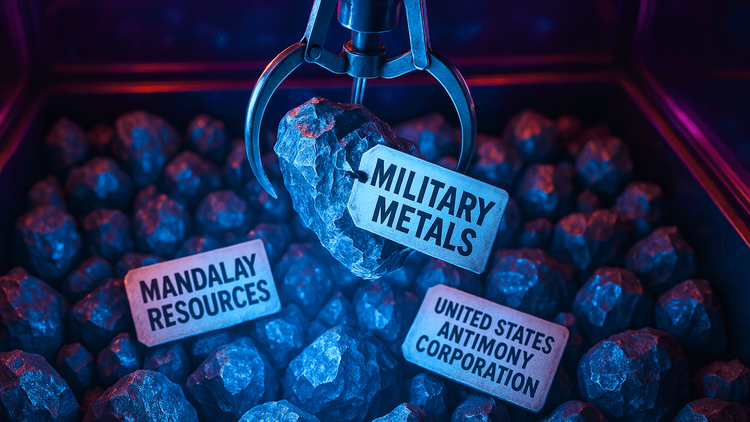Critical Mineral, Critical Defense: US Ensures Antimony for Military Readiness
Stibnite Project Approval: US Strengthens Grip on Critical Minerals Amid Rising Geopolitical Tensions

The United States has taken a monumental step in securing its critical mineral supply chain. By approving Perpetua Resources’ Stibnite project in Idaho, the White House is signaling a clear intention: the U.S. will not remain dependent on foreign powers like China for essential minerals. This move comes mere weeks after Beijing blocked antimony exports, sparking concerns over supply chain vulnerabilities.
Could this be the beginning of a broader U.S. push to develop domestic mineral resources? The approval of the Stibnite mine may be a harbinger of more aggressive strategies to follow.
America’s Critical Mineral Crisis: A Turning Point
Antimony plays a pivotal role in defense systems, renewable energy, and other high-tech industries. Yet, the U.S. currently has no domestic production. With China supplying the bulk of the world’s antimony, its recent export ban sent shockwaves through industries reliant on this metal.
The Stibnite project is a beacon of hope, expected to meet over 35% of America’s annual antimony demand by 2028. Additionally, it will produce 450,000 ounces of gold per year, creating a dual revenue stream to fortify the project’s economic viability.
A Geopolitical Power Play
This approval isn't just about minerals; it's about leverage. The U.S. government is making a clear statement: it will no longer be held hostage by foreign monopolies. In approving the Stibnite project, the Biden administration is strengthening America’s position in an increasingly competitive global trade environment.
But why stop here? The government may look to expedite other critical mineral projects across the nation. This could include reopening dormant mines, incentivizing exploration in resource-rich states, and funding innovative extraction technologies.
Perpetua Resources: A Steadfast Ally in America’s Resource Race
Under the leadership of CEO Jon Cherry, Perpetua Resources has demonstrated unwavering commitment to addressing both environmental and strategic concerns. The company revised its mine design multiple times, balancing operational efficiency with environmental stewardship.
The Pentagon’s $60 million investment in Stibnite underscores its strategic importance, while the U.S. Export-Import Bank’s interest in a $1.8 billion loan demonstrates confidence in the project’s potential to deliver long-term value.
The Domino Effect: Will More Projects Follow?
The success of the Stibnite project could set a precedent for other critical mineral projects. As the U.S. government seeks to insulate its economy from geopolitical shocks, we may see an accelerated approval process for mining operations targeting lithium, cobalt, and rare earth elements.
With states like Nevada, Colorado, and Alaska boasting significant mineral reserves, it’s plausible that the federal government will explore partnerships with other companies to bolster the domestic supply chain.
Balancing Economic Growth and Environmental Concerns
While the Stibnite project offers undeniable economic and strategic benefits, it has faced opposition from local Indigenous groups and environmental activists. The Nez Percé tribe, for instance, has expressed concerns over potential impacts on salmon habitats.
Nonetheless, Perpetua has pledged to clean up historical mining pollution in the area, aiming to transform the Stibnite site into a model for responsible mining. This dual focus on resource development and environmental restoration could serve as a blueprint for future projects.
The Bigger Picture: A Resilient Supply Chain for National Security
The approval of the Stibnite project is just the beginning. As the U.S. faces mounting competition with China, a resilient and self-reliant supply chain is not just a goal—it’s a necessity. By securing domestic sources of critical minerals, the U.S. can safeguard its defense, energy, and technological sectors from external disruptions.
In a world where control over resources often dictates power, the Stibnite project represents a decisive step toward maintaining America’s geopolitical dominance.
Conclusion
The approval of the Stibnite project is a bold move, underscoring America’s determination to secure its future in an increasingly volatile global landscape. While challenges remain, this initiative sends a clear message: the U.S. will not be outmaneuvered in the race for critical resources.
Expect more action. The U.S. government, now emboldened by this success, could soon expand its domestic mining initiatives, forging a path toward true resource independence.






